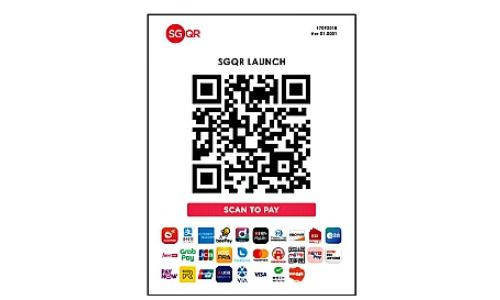Singapore has launched a single, standardized Quick Response code. The first of its kind initiative is part of efforts to transform the country's e-payment landscape.
Singapore launched a standardized Quick Response or QR code for e-payments island-wide on Monday, as part of the government's efforts to transform the country's payment landscape.
«The Singapore Quick Response Code will allow a merchant to display multiple schemes through a single QR, with all the accepted modes of payments presented below the QR. It is the first of its kind globally,» Ong Ye Kung, board member of Monetary Authority of Singapore, said at the launch event for the code.
Less Confusion
Various QR code payment schemes have been adopted by merchants, but the variety of e-payment schemes has led to confusion amongst users, noted Ong. «We foresaw this problem. So a year ago, MAS and IMDA, with the support of the Payments Council, brought the Singapore’s QR Industry together to create a single and standardized QR code for e-payments,» Ong explained.
In the next six months, the newly launched SGQR will be adopted by 27 payment schemes including common ones such as PayNow, Nets, GrabPay, Liquid Pay and Singtel Dash.
Final Pieces
The single QR Code is amongst the final pieces that the Singapore government is putting in place for a national e-payments infrastructure.
Back in 2014, the banking industry launched FAST, Singapore’s real-time and always accessible payment system. It became the backbone that enables payments across bank accounts and between consumers and businesses.
After building up FAST, the next phase was to leverage on smartphones, which many Singaporeans own. The government then built up the system in four steps: consumer to consumer (C2C), business to consumer (B2C), business to business (B2B), and consumer to business (C2B).
Four Steps
In the first two steps involving C2C and B2C, PayNow was launched, linking bank accounts to identity cards or mobile numbers. In step one, individuals could send money to one another via their mobile phone contact list.
In a second step, businesses and organizations can make mass disbursements to individuals, such as salary crediting, insurance payouts, or giving out awards, through their customers’ personal ID or mobile numbers.
In the third step, the government taps on each company's unique entity number, or UEN, to launch PayNow Corporate. «Payments can be made directly to the company’s UEN, and companies can accept payments to multiple accounts by adding unique suffixes to their UENs,» Ong explained. Launched a month ago, PayNow Corporate currently has around 40,000 users.
- Page 1 of 2
- Next >>



























